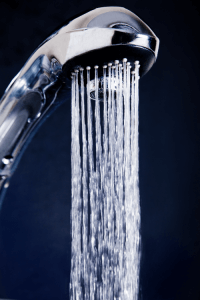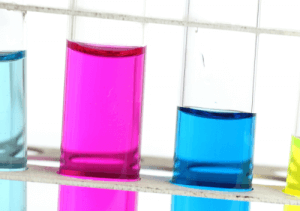 PH in drinking water is an often over looked water test. Many water companies seem to think that PH does not matter. The fact is PH is a real important element when determining to proper system when treating your well water.
PH in drinking water is an often over looked water test. Many water companies seem to think that PH does not matter. The fact is PH is a real important element when determining to proper system when treating your well water.
If the PH is to low a number on the PH scale it means that your water has to much acid. What does this mean to you? It means that if you have a PH below 7 that it will degrade copper plumbing. If you have a PH above 8 you need to think about adding acid to balance the water.
The chart below is furnished by our friends atWilkes University, Wilkes-Barre, PA.
The technical definition of pH is that it is a measure of the activity of the hydrogen ion (H+) and is reported as the reciprocal of the logarithm of the hydrogen ion activity.
Therefore, a water with a pH of 7 has 10-7 moles per liter of hydrogen ions; whereas, a pH of 6 is 10-6 moles per liter. The pH scale ranges from 0 to 14.
|
0
|
7 |
14 |
|
acidic |
neutral |
basic |
In general, a water with a pH < 7 is considered acidic and with a pH > 7 is considered basic. The normal range for pH in surface water systems is 6.5 to 8.5 and for groundwater systems 6 to 8.5. Alkalinity is a measure of the capacity of the water to resists a change in pH that would tend to make the water more acidic. The measurement of alkalinity and pH is needed to determine the corrosivity of the water.
The pH of pure water (H20) is 7 at 25oC, but when exposed to the carbon dioxide in the atmosphere this equilibrium results in a pH  of approximately 5.2. Because of the association of pH with atmospheric gases and temperature, it is strongly recommended that the water be tested as soon as possible. The pH of the water is not a measure of the strength of the acidic or basic solution and alone does not provide a full picture of the characteristics or limitations with the water supply.
of approximately 5.2. Because of the association of pH with atmospheric gases and temperature, it is strongly recommended that the water be tested as soon as possible. The pH of the water is not a measure of the strength of the acidic or basic solution and alone does not provide a full picture of the characteristics or limitations with the water supply.
In general, a water with a low pH (< 6.5) could be acidic, soft, and corrosive. Therefore, the water could leach metal ions such as: iron, manganese, copper, lead, and zinc from the aquifer, plumbing fixtures, and piping. Therefore, a water with a low pH could contain elevated levels of toxic metals, cause premature damage to metal piping, and have associated aesthetic problems such as a metallic or sour taste, staining of laundry, and the characteristic "blue-green" staining of sinks and drains . The primary way to treat the problem of low pH water is with the use of a neutralizer. The neutralizer feeds a solution into the water to prevent the water from reacting with the house plumbing or contributing to electrolytic corrosion ; a typical neutralizing chemical is soda ash. Neutralizing with soda ash increases the sodium content of the water.
 A water with a pH > 8.5 could indicate that the water is hard. Hard water does not pose a health risk, but can cause aesthetic problems. These problems include:
A water with a pH > 8.5 could indicate that the water is hard. Hard water does not pose a health risk, but can cause aesthetic problems. These problems include:
Formation of a "scale" or precipitate on piping and fixtures causing water pressures and interior diameter of piping to decrease ;
Causes an alkali taste to the water and can make coffee taste bitter;
Formation of a scale or deposit on dishes, utensils, and laundry basins;
Difficulty in getting soaps and detergents to foam and formation of insoluble precipitates on clothing, etc.; and
Decreases efficiency of electric water heaters.
Typically these problems are encountered when the hardness exceeds 100 to 200 milligram (mg) CaCO3/liter (L), which is equivalent to 12 grains per gallon. Water can be softened through the use of ion-exchange or the addition of a lime-soda ash mixture, but both processes increase the sodium content of the water.
pH of Common Liquids
|
Vinegar |
3.0 |
|
Wine |
2.8 - 3.8 |
|
Beer |
4 - 5 |
|
Milk |
6.3 - 6.6 |
|
Seawater |
8.3 |
(Source: Driscoll, 1986)
For More information about the Environmental Quality Center, please contact:
Attn: Mr. Brian Oram, Professional Geologist (PG)
Laboratory Director
Wilkes University
Environmental Engineering and Earth Sciences
PO Box 111
84 West South Street
Wilkes-Barre, PA 18766
